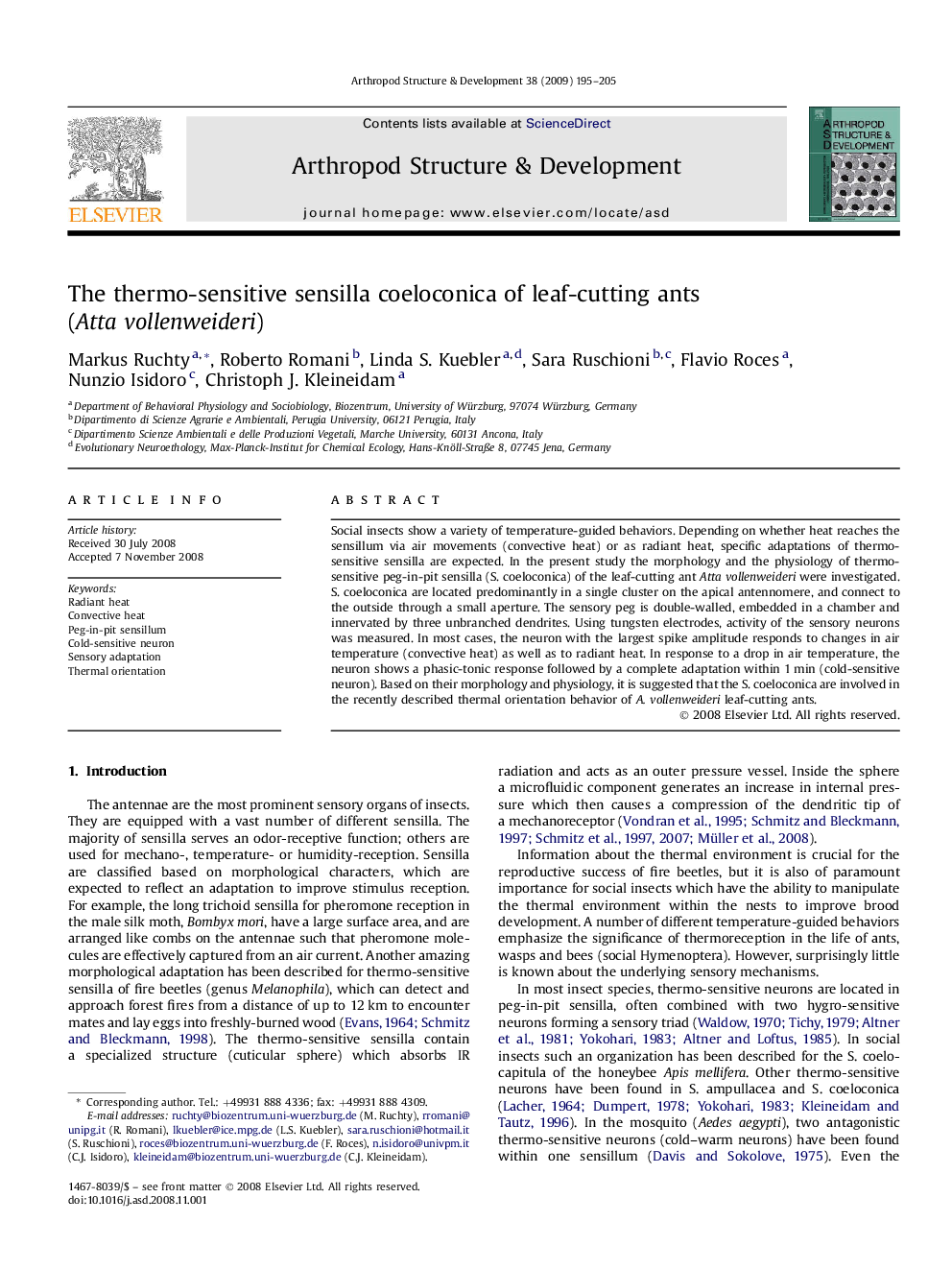| Article ID | Journal | Published Year | Pages | File Type |
|---|---|---|---|---|
| 2778901 | Arthropod Structure & Development | 2009 | 11 Pages |
Social insects show a variety of temperature-guided behaviors. Depending on whether heat reaches the sensillum via air movements (convective heat) or as radiant heat, specific adaptations of thermo-sensitive sensilla are expected. In the present study the morphology and the physiology of thermo-sensitive peg-in-pit sensilla (S. coeloconica) of the leaf-cutting ant Atta vollenweideri were investigated. S. coeloconica are located predominantly in a single cluster on the apical antennomere, and connect to the outside through a small aperture. The sensory peg is double-walled, embedded in a chamber and innervated by three unbranched dendrites. Using tungsten electrodes, activity of the sensory neurons was measured. In most cases, the neuron with the largest spike amplitude responds to changes in air temperature (convective heat) as well as to radiant heat. In response to a drop in air temperature, the neuron shows a phasic-tonic response followed by a complete adaptation within 1 min (cold-sensitive neuron). Based on their morphology and physiology, it is suggested that the S. coeloconica are involved in the recently described thermal orientation behavior of A. vollenweideri leaf-cutting ants.
